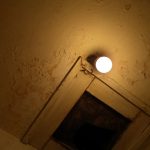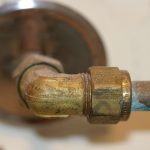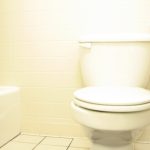When a floor drain becomes backed up, it can be confusing, and it’s easy to assume that the problem lies in the floor drain. But, that isn’t necessarily the case; most floor drain backups are actually a symptom of an underlying plumbing problem. If you’ve ever wondered why a floor drain backup occurs and you want to know how to fix the problem, this article is for you.
How Clogged Drain Lines Affect Floor Drains
If you have a clog in a drain line, it can cause a backup in your floor drain. The floor drain is the lowest drain in your home, so if the wastewater cannot drain away correctly, this is the point where it will overflow back into the home. If you have a basement floor drain and you find standing water around the floor drain, it’s likely that you have a clogged drain line. If you don’t have a basement floor drain in your home, a drain clog can still cause a backup and overflow. In these homes, the drain line clog will cause a backup in low plumbing fixtures on the ground floor, such as kitchen sinks, ground floor tubs, and showers, and laundry room drains.
How Sewer Line Clogs Affect Floor Drains
If there is a clog located deeper than the drain line down in the sewer line itself, this can also cause a backup into the home. Sewer line clogs are similar to drain line clogs; they block the pipe and prevent the wastewater from escaping. With nowhere to go, the wastewater then overflows back into the drain. As above, the easiest point of entry into your home is the lowest drain, which could be a basement floor drain or a lower plumbing fixture drain.
How Sewer Line Damage Can Cause a Floor Drain Backup
There are times when a clog may have no connection to a floor drain backup. There are three ways that a sewer line can be damaged; they are:
Tree root growth has pushed the sewer line out of position or penetrated the line itself under the yard.
The sewer line has become bellied, it’s sagging or has collapsed due to ground movement or building work.
The sewer line has developed cracks or holes, and material has entered the pipe, causing a blockage.
In each of these three cases, the sewer line will have the potential to become blocked. In all respects, this blockage will act very much like a clog even though it’s technically not the same thing. The wastewater will meet the blockage; it cannot pass, and then it will be forced back into the floor drain. A drain line clog can be simple to remove with the correct equipment, but if sewer line damage is the cause, this is much harder and more expensive to fix.
What Can You Do About Floor Drain Backups?
As we’ve seen, there are a number of different issues that could cause a floor drain backup. So, if there is a backup problem, it’s essential to discover the source of the problem before attempting to fix it, or the repair may not be correct. This is not a job for a DIY enthusiast with a little plumbing knowledge. Dealing with drain and sewer line issues without experience and the right tools can cause more damage. It’s a better idea to contact a local certified plumber for expert help and advice to correct these types of plumbing problems.
When they look at a basement floor or lower level drain backup, a professional plumber will perform three diagnostic tasks to discover the source of the problem, they are:
Asking questions: The plumber will need to ask you some questions about the problem, such as: how long has this problem been occurring? Has the floor drain backed up before, and when did this happen? Is the backup accompanied by a foul odor, and does this get worse when you use any plumbing fixtures in your home? Try to answer these questions as accurately as you can, and this will help the plumber to determine if you have a drain or sewer line problem.
A camera line inspection: The plumber will have a fiber optic camera system that can be fed into your pipes to get a better look at the insides of your pipes. This is a great way to find cracks or breaks in the sewer line and positively identify persistent drain clogs.
Plumbing fixtures tests: The plumber can turn different plumbing fixtures on and off to gather useful information on how your home plumbing system is working. How the water flows through the pipes, drain, and sewer line system can provide valuable clues on the source of the backup.
At the conclusion of this diagnostic process, the plumber will have plenty of information on the source of the backup problem. Then the plumber can recommend the best repair, and there are three likely options available, they are:
A drain clearing and cleaning service to remove a drain clog.
A sewer line repair to fix a sagging or damaged section of the compromised sewer line.
A sewer line replacement.
How Can You Prevent a Floor Drain Backup?
Once the problem is fixed, it’s a good idea to think about how this problem could be prevented in the future. After all, prevention is better than the cure, and it’s usually a far cheaper option. The best way to keep your drain and sewer line clear and ready for use is to schedule a regular drain cleaning service for your home. An annual cleaning will remove any accumulated debris that could form into clogs that will eventually block the drain line. This will go a long way to prevent messy backups into your home, and it will save you money in the medium to long term. The chances of an emergency plumbing repair is reduced, and your drain line will be in great shape.
If you have a backed up floor drain or you’re worried about slow draining sinks, tubs and showers, contact your local certified plumber for expert help and advice.
By Giovanni Longo President Flood Brothers Plumbing
Giovanni Longo is a 3rd generation master plumber who has been practicing his craft and trade in the greater Los Angeles area for well over a decade and a half. A plumbing and hydraulics-engineering innovator, Giovanni’s particular world-class expertise focuses on dealing with challenging sewer system designs as well as resolving complex commercial and residential draining issues. As a certified Flood Mitigation expert, he is also well versed in a wide variety of water damage and remediation solution.





